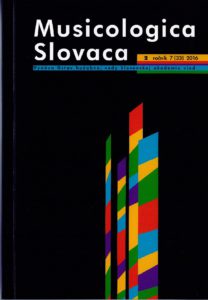Tanečný žáner a klavírna hudba na Slovensku v druhej polovici 19. storočia
The Dance Genre and Piano Culture in Slovakia in the Second Half of the 18th Century
Author(s): Jana LengováSubject(s): Theatre, Dance, Performing Arts, Music, Local History / Microhistory, 19th Century, History of Art
Published by: SAV - Slovenská akadémia vied - Ústav hudobnej vedy Slovenskej akadémie vied
Keywords: Slovakia; 19th century; piano; quadrille; mazurka; csardas; waltz; polka; functionality; aesthetic autonomy;
Summary/Abstract: The dance phenomenon was one of the sources of inspiration for piano composers active in the second half of the 19th century in Slovakia. Dance forms were composed with both a utilitarian and an aesthetic function, or there could be a fluent transition between those two poles. The dance genre was associated with salon music and with the employment of technical virtuosity. Among the favourite dances in society, the quadrille, mazurka, csardas, waltz and polka were particularly loved. A speciality was the so-called Slovak quadrilles composed especially in the 1850s – 1870s, using Slovak folk songs. The dance genre evoked a response from such composers as Jozef Rizner, Ján Egry, Emil Kovárcz, Leopold Dušinský, Maximilián Hudec, Ján Levoslav Bella, Štefan Fajnor, Ignác Boldiš, and many others. The paper examines the range of representation of individual dance forms and their musical style characterisation, as well as the relationship between functionality and autonomy in this work.
Journal: Musicologica Slovaca
- Issue Year: 6/2015
- Issue No: 2
- Page Range: 176-192
- Page Count: 17
- Language: Slovak

